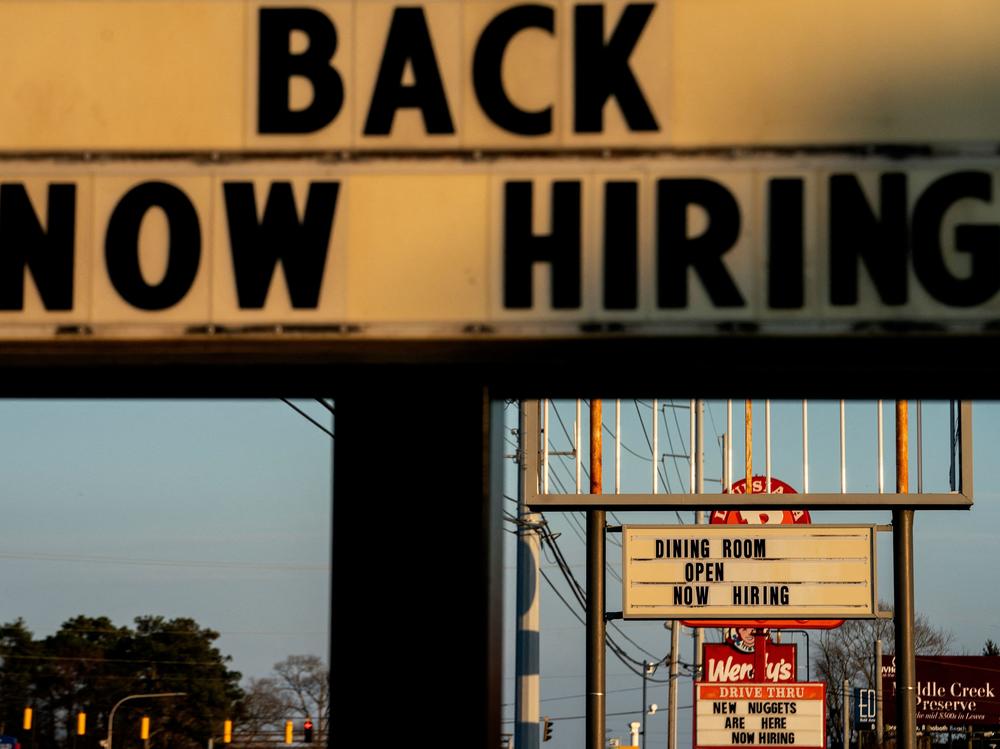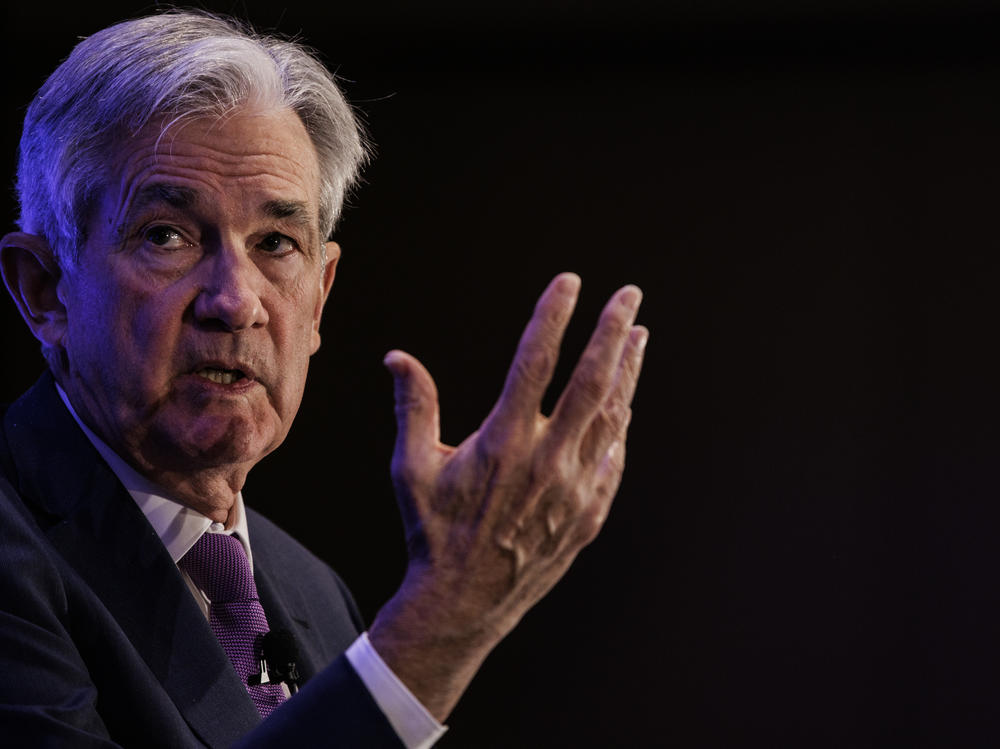Loading...
Section Branding
Header Content
Employers continue hiring spree even as war in Ukraine ratchets up economic fears
Heard on
Primary Content
U.S. employers added jobs at a healthy clip in March, despite the economic shock following Russia's invasion of Ukraine.
The Labor Department reported Friday that employers added 431,000 jobs last month, as the unemployment rate fell to 3.6% from 3.8% in February. Employment gains for January and February were also revised upwards by a total of 95,000 jobs.
The job growth in March was widespread with bars and restaurants adding 61,000 jobs, retailers adding 49,000 and manufacturers adding 38,000 jobs.
The job market remains unusually tight, which is putting upward pressure on both wages and prices and fueling inflation worries at the Federal Reserve.
"This is a labor market that is out of balance," Fed chairman Jerome Powell said last week. "It's great for workers. But we need the labor market to be sustainably tight."
Powell and his colleagues worry that if high inflation goes unchecked, it will ultimately derail the jobs recovery. Prices in February were up 6.4% from a year ago, according to the Fed's preferred inflation measure — the sharpest increase since 1982.
The central bank began raising interest rates in March in an effort to cool off demand and rein in prices. Powell has said more aggressive rate hikes could be in store in the coming months.
A separate report from the Labor Department this week showed vacant jobs outnumbered unemployed workers by nearly two to one. Employers have been forced to offer substantial pay raises in an effort to attract scarce workers.
"We don't expect to see wage pressures fall any time soon," said Julia Pollak, chief economist for the job search website ZipRecruiter." "On the contrary, what we are seeing is wage growth pressures broaden."
Wages have risen by an average of 5.6% over the last twelve months.
From the Great Resignation to the Great Return
There are encouraging signs that more people may be joining the workforce as the health outlook improves.
Friday's report showed the number of people working or looking for work grew by 418,000 in March, though the labor force is still somewhat smaller than it was before the pandemic.
In February, nearly 8 million people were not working because they were sick with COVID-19 or caring for someone who was sick. By March, that number had fallen to less than 3 million, according to the Census Bureau.
Pollak also points to a ZipRecruiter survey which found more people expect to enter the job market this year.
"The Great Return is the new labor market story," Pollak said. "People have had enough of sitting around doing nothing. Also, with COVID relief payments fading away, people are starting to feel a little bit more financial pressure to come back to work."
The job market is seeing a lot of churn
There is also significant churn in the job market, with millions of workers quitting each month — in many cases to switch to a better job. Layoffs, on the other hand, are rare, as employers are eager to hang on to the workers they already have.
"People have confidence that they can leave their old job and find new ones," said economist Nick Bunker of the Indeed Hiring Lab. "Those who stay are seeing a level of security that we haven't seen in a long time."
The challenge of finding workers may push some employers to invest in more labor-saving technology, which would allow the existing workforce to be more productive.
"I do think that will happen in the service industries," Powell told a gathering of business economists last week. "So you may well have productivity there, which would be great. That would make these high wage increases that we're seeing more sustainable."
Copyright 2022 NPR. To see more, visit https://www.npr.org.


